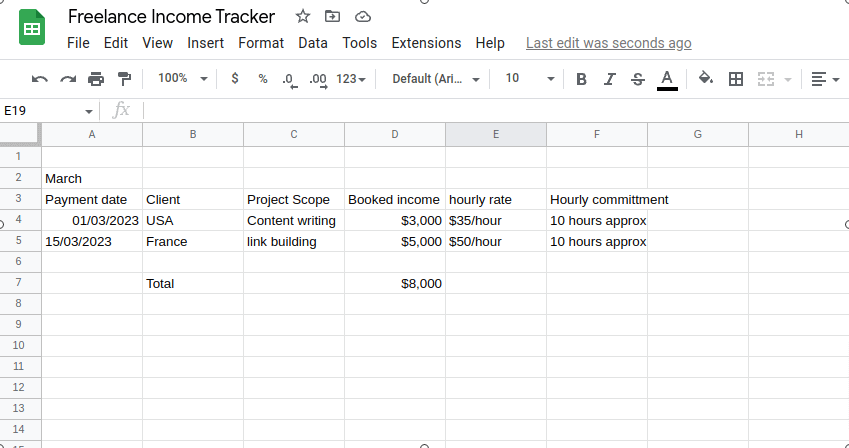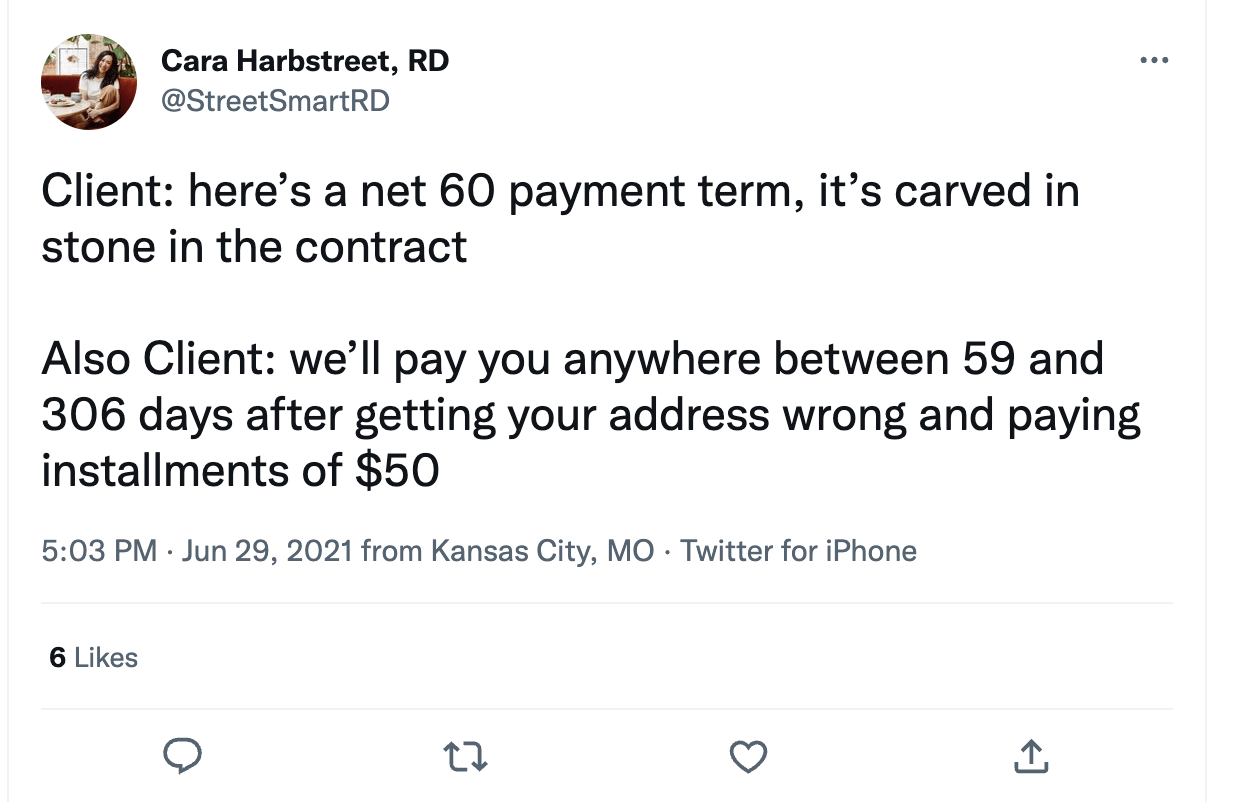Streamline your invoicing
with Billdu invoice maker
Invoicing, expense tracking, quotes, automation. Learn why Billdu is one of the most popular mobile invoicing apps.

As a freelancer, I was always stuck in the feast or famine cycle. Most freelancers can relate well to this. You either get plenty of work, much more than you can realistically handle. Or you don’t get any.
This meant I often didn’t have a handle on my finances. And that’s the point. Uncertain income doesn’t always mean that you need to be uncertain about how well you manage your finances.
While we cannot always control how often we find clients and how much work we get month after month; there are certain financial habits that you can develop to manage your finances really well.
Let’s take a look:
When you start as a freelancer, your income might be irregular and there will be both hills and valleys. Sometimes you might find yourselves overbooked. And at times, with no work.
As unfortunate as it sounds, even experienced freelancers too face this problem. I have been freelancing for 12 years and I still have months choke-full of work and months with no work. When you’re not sure of the amount of money you’re going to take home at the end of the month, it’s easy to fall into the trap of over-booking yourself. Just because there are new client queries doesn’t mean you should accept everyone. Always strive to maintain a balanced work schedule.
This ensures that your deliverables are of high quality and you consistently land new clients.
It’s not always easy for you to do these calculations in your head. That’s why using a spreadsheet or a reporting tool where you can track freelancing income can be of great help.
Capture things like when the invoice will hit your account. Add project descriptions and prices to this spreadsheet. This helps you manage everything in one place and access it whenever you want. Here’s a copy of the income tracker I use:

You can also have an hourly tracking column where you add the details of every project and their estimate by billable hours. This helps you understand the number of productive hours you spend on different types of work and the amount of money you made. You can also set aside a part of your income for the tools you use like a procreate pencil brush that you used for a graphics project once, or a SEMrush account, or a subscription to GSuite.
As a freelancer, you are going to need a lead distribution software that will help you manage your leads. You can add the bill for that under expenses and deduct the same as business expenses.
All in all, what I am trying to say is, your billable hours should be high enough to cover accounting, business admin costs, client onboarding, taxes, expenses for software tools, and any other work you carry out.
Busy solopreneurs procrastinate until they meet tax deadlines that are hard to ignore. Often I pay the penalty of late filing and then file another penalty as the interest accrued for delaying taxes by so month months.
The fix? Start expense tracking.
Build a better habit of tracking your expenses daily by doing your receipts and analyzing where the money goes.
Most payment processing apps require a 3% fee for invoices as well as some fees for credit card payment processing. Because many businesses generate revenue from these fees they try to add as much fees as they can.
PayPal has a range of fees depending on payee location, payment method, and currency. Based on all these factors you may end up paying 5% or more. In my geography, Paypal takes home 9 to 10% and that’s why I switched to wire transfers.
Some solo business people will also use their solo personal bank accounts for their business. Even I did this. But, going through bank statements to separate business and personal transactions is hard. On the flipside, it’s easy to prove your business financials when you borrow money to scale the business or to justify expenses like getting a business or digital nomad visa.
As a freelancer, if you’re selling courses, one big issue you may face is chargebacks. A separate business and personal account helps you quantify those losses easily. Also, this website Chargebackhit caters to customers who want to limit chargebacks from customers. You can find plenty of information on how to limit chargebacks and what to do about just customers and save your freelance business.
Having a separate business bank account is a must-have legal requirement in most States in America. Continuing on that thought here are ways to formalize your business.
Sole proprietorships along with LLCs are common business structures. Knowing how to choose the structure you want is one of the most important decisions to make.
If you are setting up an llc as a freelancer, avoid these mistakes.
Sole Proprietorship
Many freelancers choose the sole proprietorship route, where you can start working under your name than go for a business name.
The Pros of a Sole proprietorship
Limited Liability Company
Some freelancers also opt for the formal business structure a limited liability company provides, also called an LLC. With an LLC, you’re not personally liable for debts, whereas a sole proprietor would be responsible for any debts his business incurs. Weighing the pros and cons of each can help you decide which is best for you.
The pros of an LLC
As a freelancer, managing invoicing for freelancers isn’t exactly my favorite task. Luckily, Billdu has you covered.
There’s always a time lag between the date you send your invoice depending on agreements like Net 7 or Net 15 or Net 30. Then, there are clients who often forget to settle invoices on time.
It’s a common phenomenon. Nearly 50% of invoices end up overdue. So your job is to not let invoicing be a routine headache. For me, that was the unfortunate truth for several years.
Here’s what I did:

Finally, automate your invoicing process. When you create invoices manually, that allows plenty of mistakes to creep in. You can mistype the sum, date, or client details. Or you can miss details like the VAT number of the account or fail to correctly input current VAT rates. And this can land you in a soup.
Enhance your business efficiency with Billdu, the perfect invoicing software for self-employed professionals.
Taxes, pensions, health insurance, memberships, and business expenses all need to be eked out from what you earn. You need to know how much cash you burn every month to run your business and your life. Using basic cash management tips can help you better manage your finances.
So quickly tally the sum you need to survive each month. And limit your personal expenses to that.
Here’s how to succeed with that:
Budget is important as a freelancer and despite the curveballs that a non-fixed income throws at you, you need an estimate of the income and what you stand to spend and make every month.
Compare the numbers side by side against what you are bringing in and see if that’s enough to cover living and professional expenses. You need to find ways to increase the income, reduce expenses or carry out both. That’s the kind of financial planning that the self-employed require.
If you have extra cash in your business account, set up an emergency buffer fund. Let’s say you deplete this reserve only when there’s a slow moment in your work. Then you top it up with what was lost when a bigger earning month arrives.
Let’s say you get $5000 in February. You need $3000 for rent and food. That leaves you with $2000 in hand. Save half of that money into your buffer fund. So, when you actually need the money, it’s always close at hand.
To supply this buffer effectively, you can look for alternative ways of making money, like passive income apps, that will generate income without needing your time and attention.
You will thank me for this advice on a rainy day.
When you are working a salaried job, documents for organizing and paying your taxes usually consist of a single W-2 form. As an independent contractor, freelancers need to file W-9 forms for each company they work with. Companies usually send a 1099 at the end of the financial year to show all the income you as a freelancer earns.
In addition, freelancers may also need to consider the tax implications of remote work. These taxes may vary depending on your location and whether you work remotely for a company in another state.
Keeping your business and personal accounts separate, having a buffer fund, record keeping practices and other good habits will help you manage your finances well as a freelancer. I hope this guide helped you achieve that.

Sign up now for a 30-day free trial and get 20% off on your first subscription
By signing up you agree to Terms of use and Privacy policy